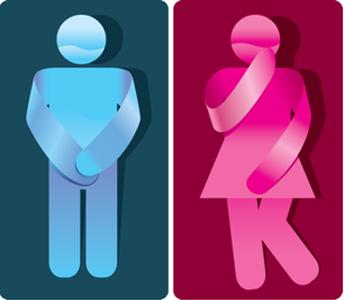Recently, I have received a flood of emails from my readers relating to Multiple Sclerosis and bladder issues. Unfortunately, this is a topic that I know all too well. When I had my initial onset of symptoms with Transverse Myelitis in 2005, not only could I not walk, but I was also unable to go to the bathroom. A scene from Chapter One of The Dog Story, narrates what I term “Urination Constipation” or my inability to pee even though I really, really…really had to go.
According to the National MS Society, 85 percent of Multiple Sclerosis patients experience bladder dysfunction. Bladder dysfunction occurs when MS lesions on the brain and spine either block or delay transmissions from the Central Nervous System to the bladder. There are three different ways that bladder dysfunction presents in MS patients:
- Spastic bladder or the inability to store urine which causes dribbling, incontinence or accidents. Medicines may be prescribed to treat the spastic bladder. Spastic bladder has the most treatment options available. The MSAA has published a list of bladder treatments you can access by clicking here. Please consult your physician before making any treatment decisions.
- Flaccid bladder or the failure to empty urine result in the stretching of the bladder walls which would cause a person to feel like they have to go more frequently and that they never completely empty the bladder. Dribbling, incontinence and accidents can result from a flaccid bladder as well. A catheter may be used to help relieve symptoms of flaccid bladder.
- Dyssynergic bladder or “conflicting” bladder occurs when the bladder and sphincter muscle contract at the same time causing urine to be retained. There are less treatment option available for Dyssynergic bladder, but your physician may prescribe an alpha-blocker to promote coordination of the bladder and sphincter muscles.
When my MS flares, I suffer from flaccid bladder symptoms. As it turns out, “Urination Constipation” is the flaccid response cause by my lesions. This has been a source of embarrassment for me as I have been forced to use public bathrooms with a catheter. In the past, this condition has also caused me to make lifestyle changes which were not healthy. I would significantly cut down on my daily water and liquid intake, hoping that would eliminate the bladder pains. As a result, I was constantly dehydrated. It took me a long time to realize that my bladder issues didn’t have to do with the liquids I consumed, rather the brain and spine lesions resulting from my Multiple Sclerosis. I realized that I need some strategies to manage this condition and lessen the impact it was having on my life. Below are the tips that have helped me:
Tips for Bladder Management
- Contact your physician and disclose your symptoms. I know the subject of this discussion can be uncomfortable, but it is important to have full disclosure with your physician if you want to experience effective relief of your symptoms.
- Plan your fluid intake. It is important to drink the appropriate amount of fluids and water regardless of your bladder condition. Not drinking water can lead to serious bladder or kidney problems. While you may not want to go to the bathroom more often, you definitely don’t want to get kidney stones because you stopped drinking. I plan my fluid intake around my day. I try to drink water in the morning and try to stop drinking fluids at dinner.
- Train your bladder. Bladder training or timed voiding can set your internal clock to help self-manage your bladder symptoms. Whether you feel like you need to go or not, try to go every two to three hours. Setting your internal clock will help train your bladder and manage your symptoms.
- Reduce or eliminate caffeine or alcohol. Caffeine and alcohol are bladder irritants and may increase the frequency of needing to urinate. I like both caffeine and alcohol, but as a result of my MS and bladder issues I changed my behavior. I used to drink coffee throughout the day, but now have cut down to just a couple of cups in the morning. I also have reduced the amount of alcohol I consume. Not to say I don’t have a good time, but moderation is the key.
- Use assistive devices. The idea of self-administering a catheter or using adult diapers is a humbling, embarrassing prospect for most of us. I know that when I had to self-catheterize for the first time at twenty eight years old, I felt like I was less of a man. Once you move on past the initial ego blow and try an assistive device, you will realize the benefit of these interventions. Adult diapers can be very discreet and worn like normal underpants. A catheter will induce a bladder response and inserted manually. The key to using catheters is understanding hygiene. A catheter can cause urinary tract infections, so you may have to take an anti-biotic. You also will want to clean the catheter after every use.
Bladder dysfunction with Multiple Sclerosis is common in 85% of those living with the disease. The good news is that there is help to effectively managing symptoms. Contact your doctor and disclose all of your symptoms regardless of how uncomfortable the conversation may be. Putting your pride aside and asking the right questions can make a substantial difference in your quality of life and ending “Urination Constipation”.
